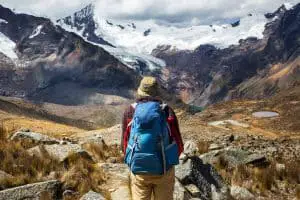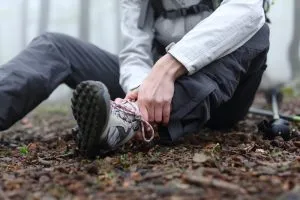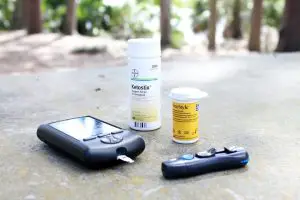Can You Hike in a Sandstorm? Tips and Precautions

Hey there thrill-seekers! Have you ever been on a hike and suddenly found yourself in the middle of a sandstorm? Probably not. BUT – it does happen, and it can happen here in the United States. If it’s something that’s been on your mind, well, we’ve got some tips and tricks to help you survive the sandy storm.
But first, let’s define this bad boy. A sandstorm is when strong winds pick up loose sand and dust, creating a swirling, sand-filled nightmare. Not only is it unpleasant to have sand in your eyes, ears, and mouth, but it can also be dangerous. The winds can reach speeds of over 50 miles per hour and the sand particles can be abrasive enough to damage buildings and vehicles.
As for hiking in a sandstorm – definitely a no-no. If you’re caught in one, try to seek shelter immediately. If there’s no shelter nearby, cover your face with a mask or cloth to avoid inhaling sand. It’s best to wait it out and let the storm pass before attempting to continue your hike. Better safe than sorry, right?
Now, on to the fun stuff! Let’s talk about how to survive a sandstorm like a pro!
Quick Links
Can You Hike in a Sandstorm?
We know, we know. You’re all about that adrenaline rush, always ready for a challenge. Hiking in a sandstorm might seem like the perfect way to spice up your hike, but is it safe?
The short answer is no, it’s not safe. While hiking in a sandstorm might sound exciting, it’s important to consider the risks involved. As we mentioned earlier, sandstorms can reach high speeds and the sand particles can damage both your respiratory system and your skin. Not to mention that you’ll have basically zero visibility, making it easy to get lost or disoriented in the storm.
However, we’re not here to rain on your parade. If you absolutely must hike during a sandstorm, there are a few things you should keep in mind. First, consider the severity of the storm. If the wind speed exceeds 25-30 miles per hour, it’s best to stay put and wait it out. If the storm isn’t too severe, be sure to wear proper clothing and gear to protect your eyes, nose, and mouth from the sand. A bandana or scarf can be used as a makeshift mask in a pinch.
Ultimately, we highly recommend avoiding hiking in a sandstorm altogether. But if you do decide to go for it, make sure you’re prepared and proceed with caution!
Precautions to Take During a Sandstorm
Alright, friends. So you’re out hiking and suddenly you notice the wind picking up and the sand swirling around you. What do you do? Fear not! Here are some precautions you can take during a sandstorm:
| Precaution | How-To |
|---|---|
| Stay put | If possible, seek shelter and wait for the storm to pass. It’s not safe to continue hiking in a sandstorm. |
| Protect yourself | Wear proper clothing and gear to cover your face, nose, and mouth. A bandana, mask, or scarf can help filter the sand particles. |
| Stay low | If you can’t find shelter, try to crouch or crawl low to the ground to avoid being blown away by the wind. |
| Stay visible | Wearing bright, reflective clothing can help rescuers find you if you get lost during the storm. |
If you do get caught in a sandstorm, the most important thing is to stay calm. If you’re hiking with a group and you get separated, try to stay in contact via phone or other communication devices. If you find yourself lost during the storm, stay put and wait for rescue. Use reflective materials or a signal mirror to make yourself more visible to rescuers.
Remember, it’s always better to be safe than sorry. If you’re unsure of the conditions or don’t feel equipped to handle a potential sandstorm, it’s best to postpone your hike for another day.
Can a Sandstorm Be Deadly?
The short answer is yes, a sandstorm can be deadly. While it might seem like just a dusty inconvenience, sandstorms actually pose significant risks to hikers and anyone caught in their path.
One of the biggest dangers of a sandstorm is the visibility. Sandstorms can reduce visibility to near-zero levels, making it difficult to see anything in front of you. This increases the risk of falls, getting lost, or being hit by debris that’s being blown around by the wind.
Additionally, the winds in a sandstorm can reach incredibly high speeds. In some cases, sandstorms have caused power outages, downed trees, and structural damage. If you’re caught in a sandstorm and can’t find shelter, you could be at risk of being blown away or hit by flying debris.
Finally, the sand particles in a sandstorm can cause damage to both your respiratory system and your skin. Inhaling large amounts of sand can lead to lung damage, while the abrasiveness of the particles can cause skin irritation and damage.
Overall, it’s clear that sandstorms are not to be taken lightly. To stay safe during a sandstorm, it’s best to avoid hiking or any other outdoor activities until the storm has passed. If you do get caught in a sandstorm, seek shelter immediately and protect your face, nose, and mouth from the sand particles. Stay safe out there, adventurers!
Where in the United States Do Sandstorms Happen?
When people think of sandstorms, they typically think of places in the Middle East, such as Dubai. While they can happen in other parts of the world, the U.S. has a few key regions where sandstorms are more common.
First up is the Southwest. This region is characterized by hot, dry weather and is home to a number of deserts. If you’re wondering where in the US you can find them, think of states like Arizona, New Mexico, and southern California. The strong winds in these areas can easily pick up loose sand and dust, creating sandstorms that can last for hours or even days.
Another area to watch out for is the Great Plains region, which includes states like Kansas, Oklahoma, and Texas. While this area isn’t quite as dry as the Southwest, it’s still prone to sandstorms due to its flat, open terrain. When winds pick up here, they can easily kick up dust and dirt, creating dangerous conditions for hikers (and even drivers) alike.
Conclusion
Well, we’ve reached the end of our sandstorm hiking survival guide. Here’s a quick recap of what we’ve covered:
- Sandstorms can be dangerous and it’s best to avoid hiking in one if possible.
- If you must hike during a sandstorm, protect your face, nose, and mouth and seek shelter if possible.
- Stay in communication with your group via phone or other devices.
- Use reflective materials to stay visible to rescuers if you get lost during the storm.
- Seek medical attention if you experience symptoms of lung damage or skin irritation.
Now, we know that extreme weather conditions can be tempting to explore. There’s something thrilling about pushing yourself out of your comfort zone and testing your limits. But we can’t stress enough the importance of being prepared and staying safe. Always check the weather conditions before embarking on any outdoor activities, and make sure to pack appropriate clothing and gear for any potential hazards you might face.
Remember, there’s nothing wrong with postponing a hike or activity if the conditions aren’t right. Your safety is the most important thing, and there will always be another day to explore. Stay safe out there, and happy hiking!







